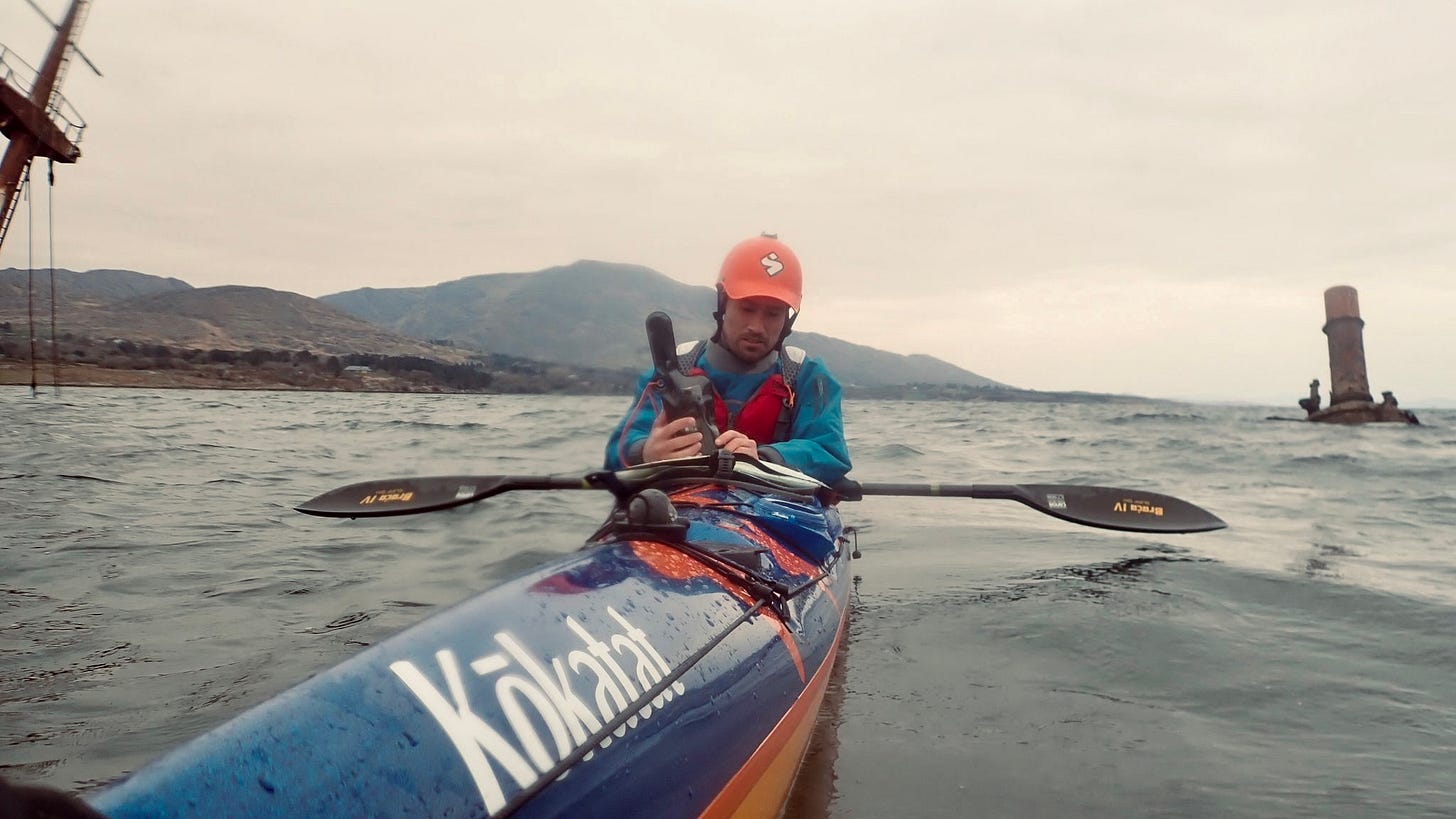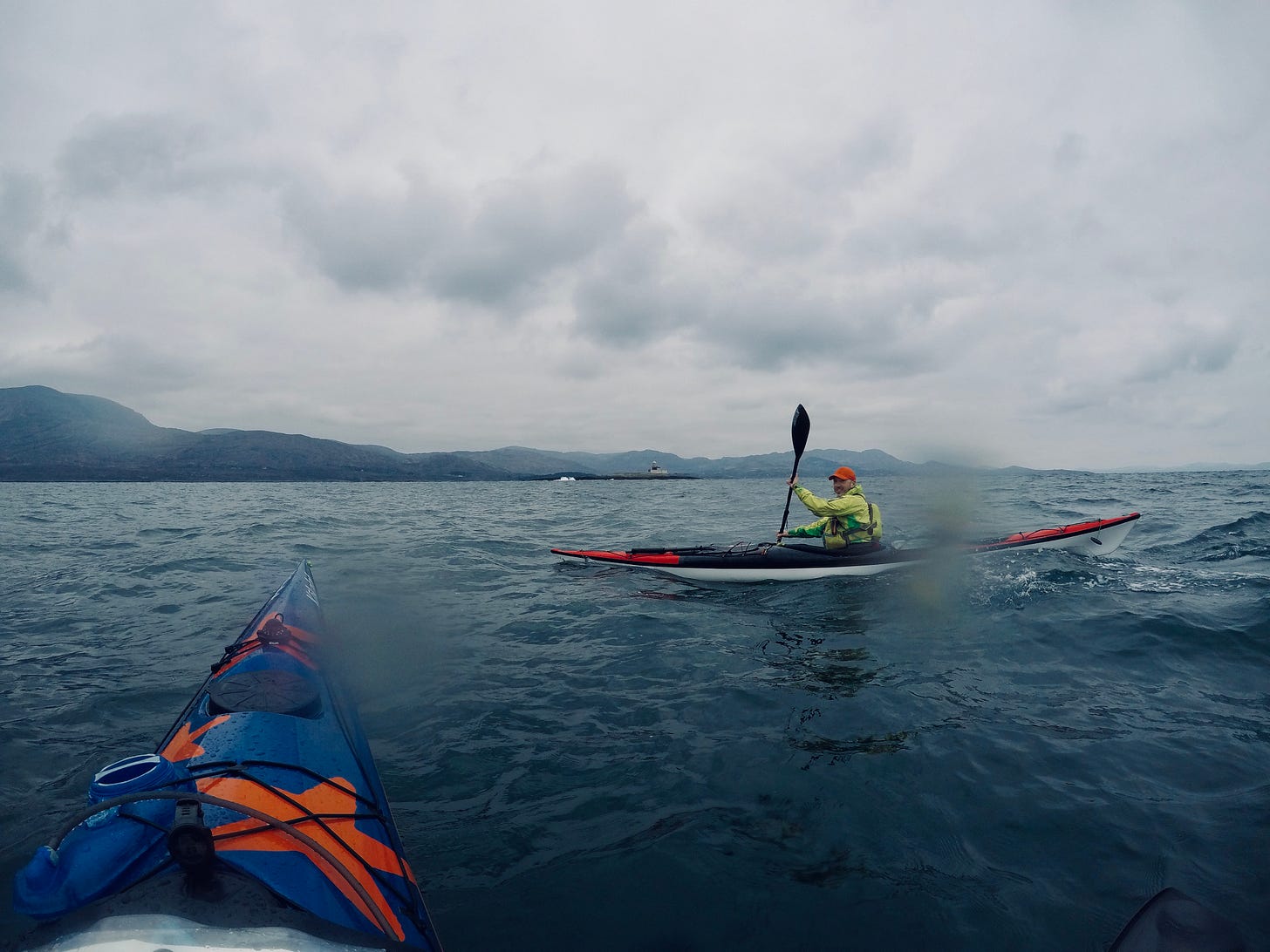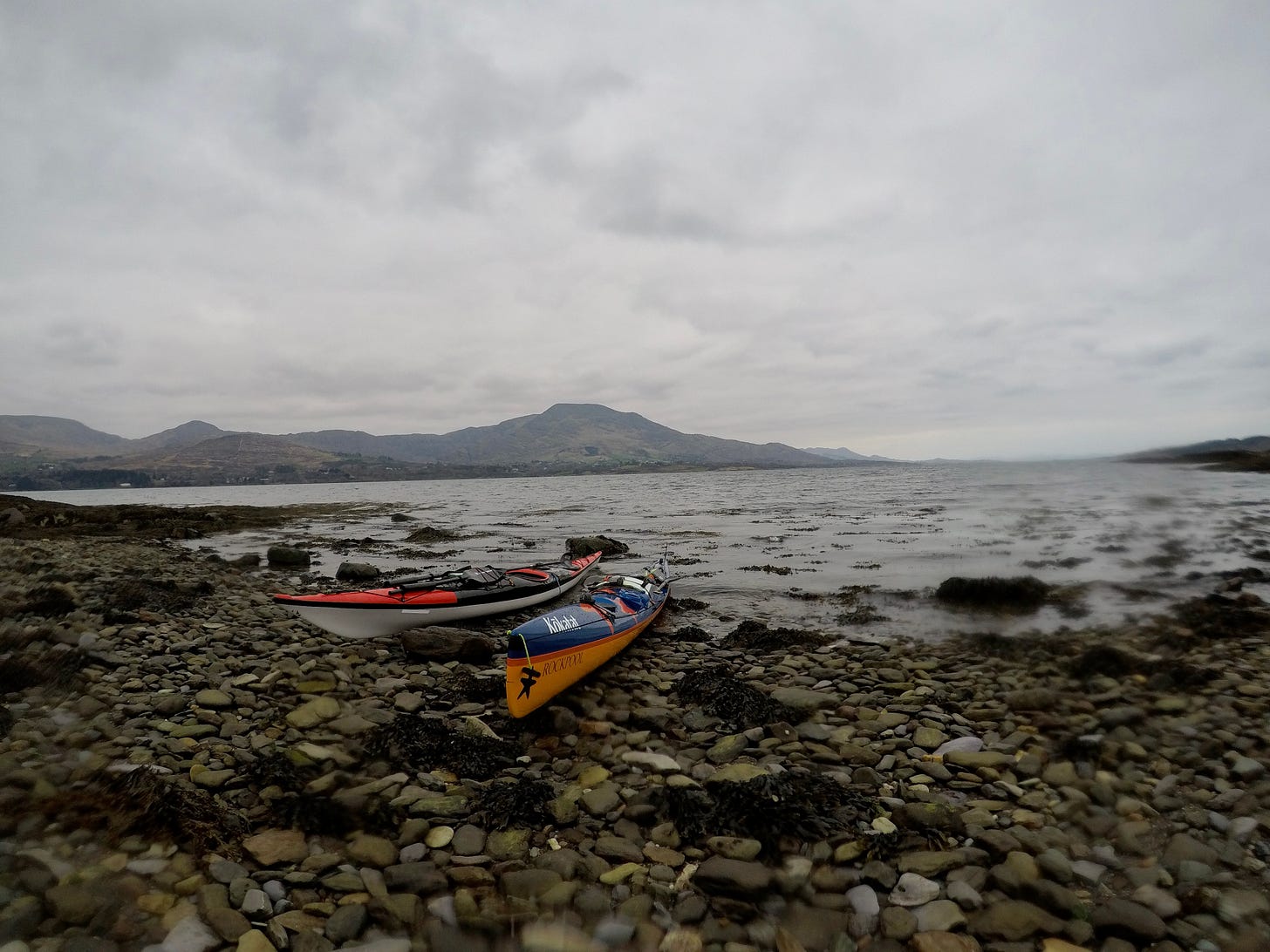“I hated every minute of training, but I said, ‘Don’t quit. Suffer now and live the rest of your life as a champion.'”
— Muhammed Ali
Fun comes in many flavors. It’s one of the most subjective emotions, and we all seem to be wired for different ideas of what fun means to us.
In adventure sports, there are two types of fun: The fun of doing something and the fun of having done something.
Skiing, surfing, sky diving, kayaking in a tide race, or just chilling on a beach or après-ski are fun to do. The payoff is in the moment and in the stoke that follows. It’s fun to have fun. It’s easy to see the appeal of an activity that puts a big grin on your face or makes you go, “woooo!” In sea kayaking, you get “yee-haw! moments” out in big waves or rock-hopping. Red Bull and GoPro have built entire brands around stoking intense, in-the-moment, “yee-haw,” real-time fun.
Then there’s the other type of fun, the fun of having done something that might actually be miserable to do. Sea kayakers and climbers call this “Type II fun.”
Writing is Type II fun. So is reading literature and deadlifting. My buddy Sam talked about medical school the way I talk about kayaking, with a smile describing the toughest parts. Medical school must be Type II fun.
In sea kayaking, open crossings are the most common source of Type II fun.
Time drags on, and there’s nothing to look at but rolling, empty water. Your destination--sometimes a dot on the horizon--never seems to get any closer. You feel totally exposed in your shell of a boat, a few millimeters of fiberglass between you and the cold deep. If you’re not slightly nervous the whole time, there’s something wrong with you, and you probably don’t belong out there in the first place.
And yet, there’s no feeling like finally standing on that far shore, looking back across all that blue, having just crossed it. It’s enough to make you forget the tedium and the doubt that nagged you all the way over.
Most of this trip is going to be Type II fun. I’ll be wet and cold and blistered and alone. The weather is probably going to suck most of the time. I’ll have many long, boring, intimidating crossings to look forward to. Everything is going to hurt.
I can’t wait.
With around 100 days to go, I’m focusing on crossings with the time I have left. On my most recent call with Mike, we talked about my strengths and weaknesses after almost a year of training. While my technical skills, like rolling and boat handling, are where they need to be, I must use the time I have left to practice big, exposed crossings in marginal conditions. In other words, I need to have more Type II fun.
Trip Report: Bantry Bay Double-Cross
Last weekend, I got out on the water with my new friend and The Lap reader, Ian Kavanagh. Ian is a leader in the Sea Scouts, up near Dublin, with a talent for leadership, teamwork, and banter on the water.
We put in at Gortnakilly Pier--on the Sheep’s Head Peninsula and crossed Bantry Bay to Roancarrigmore, a rock topped with a 19th Century lighthouse. From there, we paddled into sheltered waters behind Bere Island to plan our next move.
During our coffee break, conditions took a turn for the Type II. The easterly wind that had made our crossing just choppy enough to be interesting had picked up well beyond what the forecast had called for. The island and the hills on the mainland create a nasty wind tunnel effect.
Working with an inaccurate forecast is like dealing with someone who lies--you’re constantly wondering, “What else didn’t you tell me?” It’s not a good feeling, especially when you’re miles from safety.
We scrapped our plan for a circumnavigation of the Island. After checking out a shipwreck in the channel, we pointed head-to-wind and started the long slog back to open water and our return crossing.
Navigation had been easy on the way out--we had a big white lighthouse to aim for. Returning to Gortnakilly was a different story. The area where we put in is featureless from a distance--nothing but sea cliffs and no alternative exits for miles. We had to get it right.
Luckily, we had worked out bearings and reciprocals to follow our compasses home. More Type II Fun!
It’s not fun to follow a bearing and hope you got the math right, but it’s a real confidence boost to prove to yourself that you can rely on that skill.
Type III fun
An article from REI takes this scale a step further with Type III fun. They describe Type III as “Not fun at all. Not even in retrospect.” At this point, you’ve crossed the line from adventure into misadventure.
One of the benefits of type II fun is that it gives you the experience you need to stay out of Type III situations.
Thank you, Team Fox donors! 🦊
Thank you to everyone who donated to The Michael J. Fox Foundation for Parkinson’s Research this week:
Dr. Samuel Decker, Deborah Leff, Robert Wiggins, Frank Rigg, Tom & Matthew McNaught & Gilbert, Rosemary Kerrebrock, Crickett Redmond Kerrebrock, Tracie Shea, and Anonymous.
Thanks for reading,
-Charlie
Thank you to Mike Jones for coaching and guidance.
Kokatat is the official gear sponsor of The Lap.
The lap will be fueled by Resilient Nutrition’s Long Range Fuel and bars.
Expedition coffee by 3fe.
CH Marine will be providing a VHF radio and other safety equipment.
Tent and cooking gas provided by Paddle & Pitch. Trolley by KCS.













